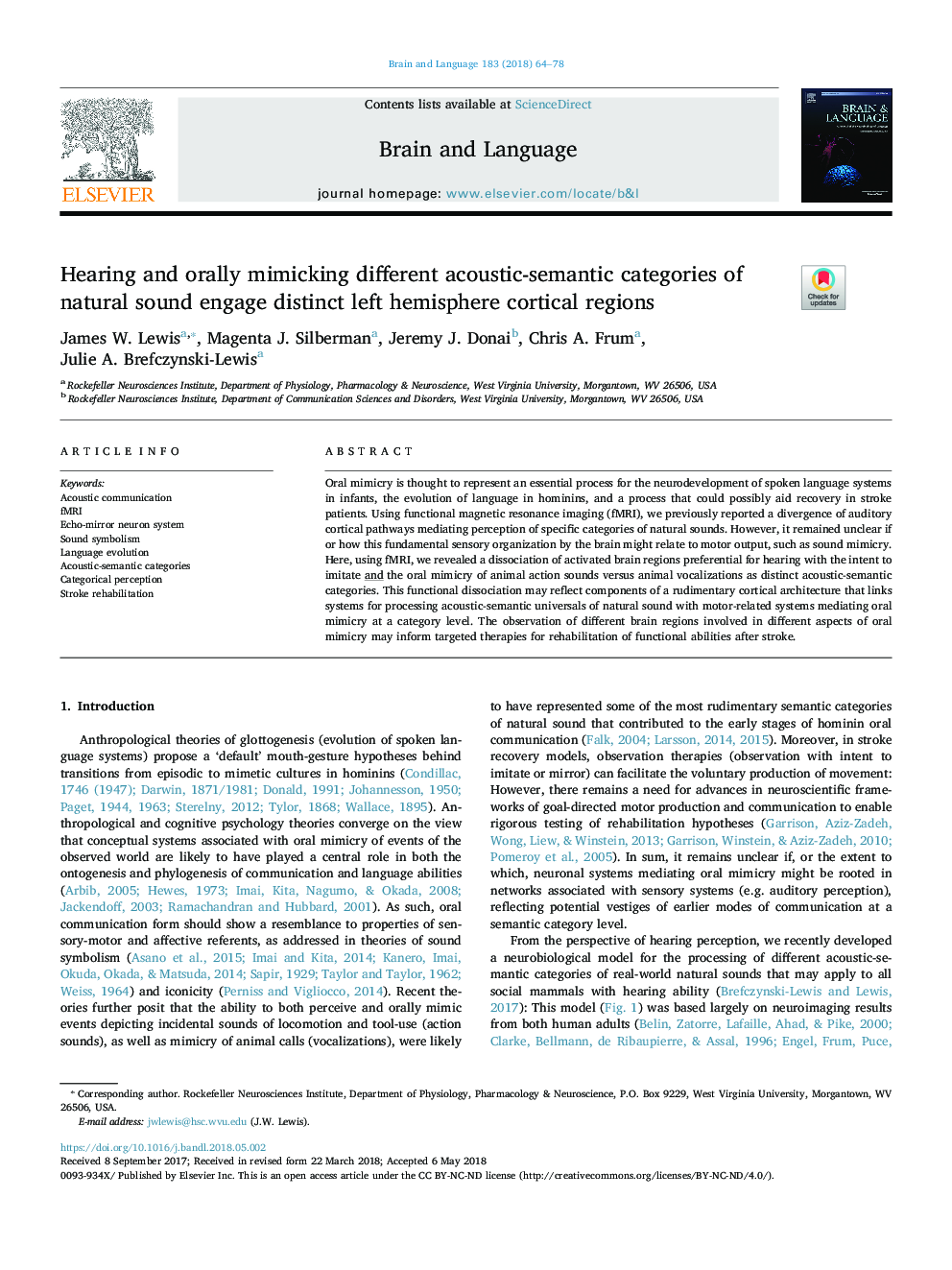| Article ID | Journal | Published Year | Pages | File Type |
|---|---|---|---|---|
| 7283417 | Brain and Language | 2018 | 15 Pages |
Abstract
Oral mimicry is thought to represent an essential process for the neurodevelopment of spoken language systems in infants, the evolution of language in hominins, and a process that could possibly aid recovery in stroke patients. Using functional magnetic resonance imaging (fMRI), we previously reported a divergence of auditory cortical pathways mediating perception of specific categories of natural sounds. However, it remained unclear if or how this fundamental sensory organization by the brain might relate to motor output, such as sound mimicry. Here, using fMRI, we revealed a dissociation of activated brain regions preferential for hearing with the intent to imitate and the oral mimicry of animal action sounds versus animal vocalizations as distinct acoustic-semantic categories. This functional dissociation may reflect components of a rudimentary cortical architecture that links systems for processing acoustic-semantic universals of natural sound with motor-related systems mediating oral mimicry at a category level. The observation of different brain regions involved in different aspects of oral mimicry may inform targeted therapies for rehabilitation of functional abilities after stroke.
Keywords
Related Topics
Life Sciences
Neuroscience
Biological Psychiatry
Authors
James W. Lewis, Magenta J. Silberman, Jeremy J. Donai, Chris A. Frum, Julie A. Brefczynski-Lewis,
